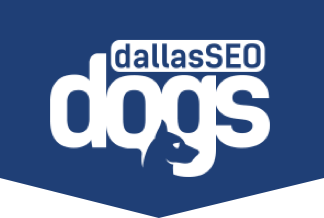Care and Feeding: Training Your Custom GPT

Welcome to the comprehensive Dallas SEO Dogs Guide on effectively training and maintaining a custom Generative Pre-trained Transformer (GPT) for your business needs.
In digital marketing and broader customer engagement, leveraging AI with a custom GPT is a game-changer. Let’s go through the crucial steps of training your GPT, from setting clear objectives to ensuring continuous learning and adaptation.
Read on to enter the world of GPTs and unlock their potential for your business!
Step-by-Step Guide
The journey of training a custom GPT requires a structured approach. Let’s go step-by-step to ensure your GPT aligns with your business objectives and can deliver optimal results.
Step 1: Define Your Objective
Three things to consider when defining your endpoint:
Specific Goals
First, clearly articulate what you want to achieve with your custom GPT. This could involve tasks like generating technical reports, creating content drafts, or providing customer support.
Target Audience
Consider who will interact with your GPT. Segmenting your audience is necessary, as your GPT may get all kinds of visitors (hopefully!). Understanding the audience helps you tailor the model to their language, preferences, and, most of all, needs.
Performance Metrics
Establish how you’ll measure the success of your GPT. This might include accuracy, engagement metrics, or the quality of the content input the GPT provides.
Step 2: Data Collection
Next, it’s time to pack a lunch for your GPT. What will they consume and learn?
Diverse Sources
Gather data from various sources to ensure diversity in language, style, and content: industry journals, online forums, historical archives, etc.
Data Volume
The more data you can provide, the better the model will perform. Ensure the data is relevant to your objectives (as defined above).
Legal and Ethical Considerations
Ensure your data collection complies with legal requirements and ethical standards, particularly regarding copyright and data privacy. You want to do this as cleanly as possible.
Step 3: Data Preparation
There are lots of ways to make your GPT lunch more digestible!
Data Cleaning
Remove irrelevant or redundant information. This might involve stripping HTML code from web content or correcting spelling errors.
Data Formatting
Structure your data consistently: breaking text into smaller chunks or tagging parts of speech or other characteristics of note.
Validation Sets
Create a subset of your data for validation. This helps evaluate the model’s performance during and after training.
Step 4: Choose a Base GPT Model
There are a few ways to go here. All of them are worthwhile, but you’ll find the model that fits your needs — and your resources.
Model Variants
Different GPT models offer different capabilities. A larger model like GPT-4 may show more advanced understanding and generation abilities but at a higher computational cost.
Resource Considerations
Assess the computational resources required for different models. Training larger models demands more powerful hardware and could incur higher costs.
Step 5: Train Your Model
Time to chow down! GPT training, like any AI training, can be much more time-intensive than it looks in the movies. But it’s the most exciting part, as you open up the AI’s eyes and your own to the breadth of knowledge it might command.
Training Environment
Set up a suitable environment for training, which may involve cloud-based platforms or dedicated servers.
Monitoring Progress
Regularly monitor the training process. Look for signs of overfitting or underfitting and adjust the training parameters accordingly.
- Underfitting: The model produces less accurate results for unseen data, rendering its predictions less useful. And since predicting is literally all a GPT does, that’s a problem.
- Overfitting: The model generates high accuracy scores during training, but only because it knows its input data but can’t quite predict outside that body of knowledge.
Step 6: Evaluate and Fine-Tune
As with any software, training may require several versions, tweaking the model with each pass to improve performance. Once you’ve defined your data sets and you know the model is learning normally, iteration and testing will take up most of the training time.
Testing Scenarios
Test the model in various scenarios to ensure it can handle a range of inputs and generate appropriate responses.
Feedback Loop
Incorporate user feedback into the fine-tuning process. Real-world usage often reveals issues not evident during initial training.
Adjustments
Make adjustments to the model configuration and, you guessed it, retrain as necessary. For example, this could involve modifying the training dataset or changing the model’s parameters.
Step 7: Implementation
It’s time to integrate your model into the desired platform: a website, an app, or a software ecosystem.
User Interface
Make sure the user interface offers smooth interaction with the GPT model. The interface should be intuitive and responsive.
Security and Privacy
Implement robust security measures to protect user data and ensure privacy compliance.
Step 8: Continuous Learning
Once built, your GPT — not to mention your users — will remain hungry for more and newer data.
Updating the Dataset
Regularly update the training dataset with new information, as described above, to keep the model current and relevant.
Monitoring Performance
Continuously monitor your model’s performance for areas and details you might improve.
Re-training
Periodically re-train your model with updated data to maintain its effectiveness and adapt to changes in language use and user expectations.
Following these steps, you can effectively train a custom GPT model tailored to your needs and objectives. This process requires technical expertise, strategic planning, and ongoing commitment to ensure the model remains effective and relevant over time.
But what should it be trained on?
Care and Feeding | Best Practices for AI Training Data
Expanding on the recommended AI training data for a custom GPT model requires understanding the nuances and specifics of each type of data.
First up is knowledge specific to your business industry: what the GPT needs to know about its new job:
Type One: Industry-Specific Knowledge
Relevance and Precision
Training your GPT with industry-specific knowledge ensures the model’s output is relevant and precise for your field. This is especially crucial for applications like technical support, professional advice, or content drafting for a specific industry.
Competitive Edge
A GPT model trained on specialized knowledge can provide a competitive advantage by enabling unique insights and tailored solutions that more generic models may not offer.
Sources and Considerations
- Trade Publications and Research Papers: Incorporating literature, research findings, and articles from leading trade publications in your industry can provide the model with a wealth of specialized knowledge.
- Internal Documents and Reports: Including your organization’s existing resources — white papers, case studies, and internal training materials — will help the GPT understand your specific business context.
The key challenge is continuously updating this data to keep up with industry changes and advancements, balancing technical jargon with general language to maintain your GPT’s accessibility.
Type Two: Customer Interaction Data
The second type of data your GPT will need to access is how your business interacts with customers and users.
Personalized Responses
Training your GPT with real customer interaction data allows the model to learn from actual scenarios, leading to more personalized and effective customer interactions.
Improving Customer Service
You can significantly enhance customer service capabilities by helping the model anticipate and better respond to common queries and concerns.
Data Types and Integration
Cleaning your data and preparing the best possible training dataset is paramount.
Chat Logs and Email Correspondence
Incorporating anonymized transcripts from customer service chats and emails provides real-life examples of customer interactions.
Feedback and Reviews
Customer feedback, reviews, and surveys in your training data can help the GPT understand common customer sentiments and points of satisfaction or frustration.
Ethical Considerations
It’s critical to handle user data carefully, respecting privacy and confidentiality. Anonymization and compliance with data protection regulations are essential.
Type Three: Cultural and Contextual Relevance
Finally, you need to tell the GPT about the world it lives in.
Enhancing User Experience
A GPT that understands cultural nuances and context can offer a more relatable and engaging user experience, which is especially important for global applications.
Avoiding Misunderstandings
Training in cultural context helps prevent misunderstandings or inappropriate responses that could arise from a lack of cultural awareness.
How to Achieve It
- Diverse Data Sources: Including content from various cultures, languages, and regions is crucial. This can range from localized news and literature to popular culture references and social media content.
- Contextual Scenarios: Simulated or real-world scenarios that reflect different cultural contexts can help the GPT navigate complex social and cultural dynamics.
The primary challenge here is representing various cultures without introducing more biases or stereotypes. Regular updates and reviews of this data are necessary to keep up with evolving cultural dynamics.
Balancing these data types thoughtfully ensures your GPT model is not only effective and efficient but also sensitive and responsive to the diverse needs and contexts of each of its users.
Dallas SEO Dogs | Leveraging Genius
Integrating a custom GPT into your business strategy is more than just an advancement; it’s necessary for staying competitive and relevant. This Dallas SEO Dogs Guide on the care and feeding of your custom GPT should empower you with the knowledge and tools necessary to harness the full potential of AI. But that’s just the beginning of what we offer.
Are you ready to unlock the full potential of your business? Contact Dallas SEO Dogs today and take the first step towards transforming your digital strategy and presence. We offer state-of-the-art web design, SEO and PPC services, and all the content your site will need. Let’s shape the future of your company and world together!
